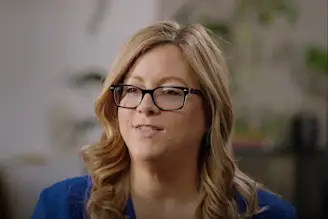From healthcentral.com
Managing these two often co-occurring conditions can be tricky. Here, patient-backed advice that works
Psoriasis (PsO) and psoriatic arthritis (PsA) are two different conditions, but they have a very close relationship (we’re talking siblings here, or first cousins at the very least). Both disorders are considered chronic (meaning there’s no cure) and autoimmune (their symptoms are triggered by the body’s own immune system). Inflammation plays a key role in both, but there’s a difference in the target of that inflammation. In PsO, inflammation affects only the skin; in PsA, it attacks the joints and places where tendons and ligaments connect to bone, as well as—quite often—the skin.
According to the National Psoriasis Foundation (NPF), up to 30% of people with psoriasis will go on to develop PsA and 85% of people with PsA also have psoriasis. The NPF tells us that psoriasis almost always comes first, with joint pain symptoms starting to develop about 10 years later, but that’s not always the case. Sometimes skin and joint symptoms develop at the same time, and in rare cases joint symptoms are the first to appear. One study, published in the Journal of Dermatological Treatment, showed that up to 3% of patients developed joint disease before skin disease.
Living with either PsO or PsA brings various challenges. So it’s a no-brainer that having both puts you under even more pressure. But challenges can be overcome. We spoke to three people who live with both types of psoriatic disease to find out how they make it work.
“It’s a Constant Game of Whack-a-Mole”
Tracy Davenport, 61, Maryland’s Eastern Shore
My psoriatic disease story: I’m actually the third generation in my family with psoriatic disease. My mom had psoriasis and PsA and so did her mom. I’ve had psoriasis since I was about 12. The winters were super hard—my legs would become so itchy I would scratch them until they bled (as did my mom).
My PsA journey has been even more complicated. I was a college athlete (rower) and felt good, but then after college I continued to be very athletic and I had one injury after another—pretty serious ones. It started with really bad back problems for about 10 years and then it went all over my body: my wrists, elbows, hips, and knees. Finally, I noticed I started dropping my coffee cup a lot. So I went in and told my GP, and knowing that I had psoriasis, he got me an appointment with a rheumatologist. I started on a systemic medication, which helped my skin and my joints some, but then my hip still hurt. Then I tried an injectable systemic medication and I found complete remission at the age of 59. That lasted about a year before it stopped working. Now I am back in complete remission with my joints on a different medication but my skin is still in a flare a lot of the time. However, I am so grateful to feel so good in my joints I don’t even care about my skin most days.
My biggest challenges: The biggest challenge is just feeling like I am constantly in a game of whack-a-mole. We get one thing fixed and then something else goes (like my joints are great but my skin is not). I think another challenge is trying to coordinate between my rheumatologist and dermatologist. They are both fabulous providers, but it can be tough to figure out things together. I do try to never miss an appointment so that my providers can see me both when I am at my best and when things are off track. I think it’s really helpful that they have a baseline.
How I make it work: I think if you have psoriatic disease, you have to understand the seriousness of the situation. I have a very unique perspective after watching my mom suffer. I don’t want that, so I can tell you that you have to do your best to try to stay on top of what’s going on. Once you get off course, the longer you let it go the longer you will be off track. And exercise is not a choice if you have psoriatic disease. It is as mandatory as brushing your teeth, for so many reasons. If you can’t figure out how to exercise on your own, it’s time to see a physical therapist and ask for help in moving on a consistent basis.
Because I saw what this disease did to my mom, I am extremely on point with my lifestyle. I eat very well, avoid fried foods and alcohol, and exercise at least seven times a week including hot yoga, weight lifting, roller blading, walking, and biking!
“My Disease Became so Severe My Doctors Put Me on Disability”

Todd Bello, 61, St. George, UT
My psoriatic disease story: I was diagnosed with psoriasis at the age of 28. Five years later I was diagnosed with PsA. My journey has been like a rollercoaster ride: ups and downs and often not knowing how things will work out. Very frustrating! But these days I feel very fortunate because my symptoms are under control—the biologic medication I take works for both psoriasis and psoriatic arthritis—with only minor joint pain occasionally. So overall, my treatment plan is working really well, but I am aware that these particular meds tend to fail after about five years.
My biggest challenges: I still deal with many challenges because of my disease, such as the high cost of drugs and out of pocket expenses. I’ve had some career challenges because my disease became so severe my doctors put me on disability. I had to sell my house to keep up with inflation.
I have also experienced temporary setbacks with joint pain and other health issues that correlate with psoriasis. For instance, my doctors diagnosed me with nonalcoholic fatty liver disease (NAFLD) from my bloodwork.
How I make it work: I face my challenges head on as they arise and simply do the best I can, every single day. I had to reinvent myself to overcome career challenges, so I became very knowledgeable about investments, spending a lot of time researching companies and growth stocks. My occupation took a 180-degree turn by becoming a swing trader, but my body applauds that decision. The best advice I can give to anyone who is struggling with PsO and/or PsA is to seek out a board-certified dermatologist and/or rheumatologist. Once you get psoriatic disease under control, you can add in other things to optimize your health.
I always listen to my peers—I find that support groups can be very helpful (I’m always available via my Facebook support group page Overcoming Psoriasis to help out a fellow PsO/PsA brother or sister). I also follow my doctor’s recommendations: low impact exercise and a well-balanced diet, and incorporate climate therapy (the sun and the sea) which for me works rather well. I even managed to reverse my NAFLD diagnosis through lifestyle choices.
I know things can be extremely difficult, but we have to approach life with gratitude. This is what helps me put things in a better perspective.
“Some Days I Feel Like I’m Treading Through Deep Water and Can Barely Move”
Emily Hertzberg, 41, East Meadow, NY
My psoriatic disease story: I was diagnosed with psoriasis at around age 13 and the diagnosis of PsA came later on at age 22. I also had scalp psoriasis. I was an athletic child, growing up dancing and playing soccer. In college I played rugby and would get more injured at practice than at the games. Right out of college I noticed my whole body hurt and I had days where I couldn’t stand or walk. My joints felt like they were on fire. After being diagnosed by a rheumatologist, I didn’t know where to turn or what to do.
I decided to become my own health advocate and seek as much information out as possible about PsA. I tried numerous treatments, had some severe allergic reactions and ended up in the hospital a few times. Throughout the years I had various ER adventures and ICU stays, and also got diagnosed with other serious rare autoimmune conditions. I even managed to survive a spontaneous coronary artery dissection (SCAD) attack. I am currently on a great treatment plan (my psoriasis is well managed with light therapy and my PsA is well managed with medication) and I feel stronger every day. A positive outlook is everything!
My biggest challenges: There are so many challenges with PsA and psoriasis. One of my big ones is managing energy levels and fatigue. Some days I can do so much and some days I feel like I’m treading through deep water and can barely move. Some days I’m on top of the world, and other days I am exhausted.
Another challenge is dealing with flare ups, which can happen without any notice. Also, there’s no one medication that works well for everyone with PsA. For me it was all about trial and error. I am allergic to many, many IL-17 and IL-23 inhibitors as well as several TNF blockers. I also developed severe side effects from methotrexate to the point where I almost went blind. Several medications put me in the hospital with allergic reactions and severe cellulitis. It has taken me over 20 years to find meds that work and keep me stable. I found one that worked for over seven years, but my body got used to it and I had to start the gruelling process yet again.
How I make it work: It’s all about balance for me. I take naps, I rest when I need to, and I listen to my body. I try to make a to-do list and do what I can when I feel good. It’s important to stay on top of your treatment plan and see your doctor right away if you experience any changes in your body, how you feel, and if your skin flares up. In my case, I usually embrace the flare and listen to my body to figure out what’s going on. Sometimes flares are triggered by stress, changes in temperature, a change of season, overdoing an activity, or something in your diet.
My mantra is this: We are PsA warriors. We can handle anything that comes our way because PsA doesn’t define us. My advice to others is to be your own health advocate and speak up for what you want. Talk to your doctors about treatment options and explore what works best for you. Warrior, you’ve got this!
https://www.healthcentral.com/condition/psoriasis/my-biggest-challenge-with-pso-and-psa


No comments:
Post a Comment